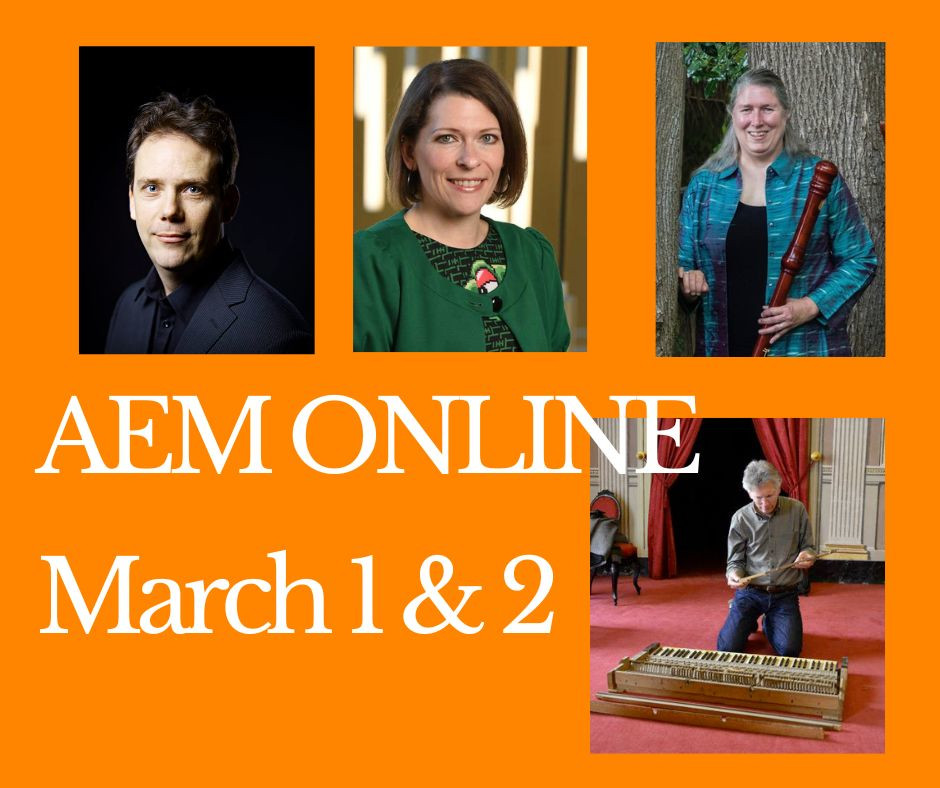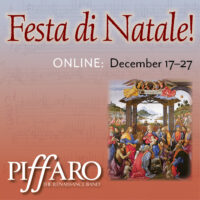
Fair Firenze: Greatest Hits of Late Medieval Florence, with Karen Cook
Saturday, March 1, 1:00 – 2:30 p.m. Eastern Time
We’ll tackle works (in facsimile or modern notation, players’ pick) by some of the big names in the Squarcialupi Codex, including Francesco “Landini”, his teacher Lorenzo, Andrea, Donato, and Gherardello, all of whom are “da Firenze” – from Florence. We’ll reach out to other manuscripts to include their neighbor Paolo da Firenze, whose works were supposed to be copied into Squarcialupi too but for some reason never made it in. Madrigals, ballate, and cacce, oh my! Open to: all instruments, intermediate and up. Voices welcome. Pitch: A=440
A Tale of Two Semitones with Paul Poletti
Saturday, March 1, 3:00 – 4:30 p.m. Eastern Time
Most early music musicians are familiar with the oft-stated maxim that “sharps are low and flats are high”. But what does this mean, exactly? How much lower or higher should they be than in equal temperament? And why should they be different at all? Where does this idea come from, for how long was it considered standard practice, how did the early texts describe it, and, most importantly, what practical techniques can we use today to try to incorporate in our playing? In this session, we’ll be examining all this and more on the topic of what was once considered a hallmark of the best musicians: the ability to distinguish between diatonic and chromatic semitones.
This session is primarily aimed at players of what were called the “perfect” instruments: the voice, unfretted bowed strings, and to a lesser extent, woodwinds. Players of “imperfect” instruments – keyboards, the lute, and the harp – will of course benefit from knowing about what their colleagues are supposed to be doing. All are welcome!
The Story of Lerma, with Wouter Verschuren, dulcian
Sunday, March 2, 1:00 – 2:30 p.m. Eastern Time
Many players of “Loud” instruments, such as the shawm, dulcian or sackbut, have played “Lerma” pieces, from the edition published by AEM and edited by Douglas Kirk, or at the Amherst Early Music Festival… But who or what was Lerma? In the first part of this class, learn about the intriguing history of Lerma, and in the second half of class, play a piece connected to Lerma – on an instrument size of your choice.
For dulcian, shawm, and sackbut players, as well as anyone interested in this repertoire. Pitch= A440.
Music Appreciation – The Joy of Listening, with Frances Blaker
Saturday, March 2, 3:00 – 4:30 p.m. Eastern Time
“Music Appreciation – or how to recognize and enjoy what you are hearing when you listen to Music”, with Frances Blaker, recorder
Enjoying music can happen on many levels, from the unlearned listener who just likes the mysterious sounds floating past, to the astute listener who can hear and perceive all the lines of a composition at once, savoring the harmony, following every aspect of a piece. Most of us fall somewhere between these two extremes. My own experience has been that, the more I perceive and understand, the deeper my enjoyment and satisfaction become. Now I want to help you get a grasp of some of the various elements that make up the river of music as it flows by: melody-accompaniment, rhythms, imitation, phrasing, tone colors and recognizing various instruments and voice, texture from simple to complex. This is a listening class rather than a playing class. We will listen to recordings, follow along in scores, and discuss features of each piece. And in the process, you can enjoy hearing many pieces of many types – what a joy!
Join AEM ONLINE for new classes in each month! There is no need to create an AEM account, register for any number of sessions – classes are $30 each. Music for the classes is posted in advance. Recordings of the class are available to participants for 7 days.

